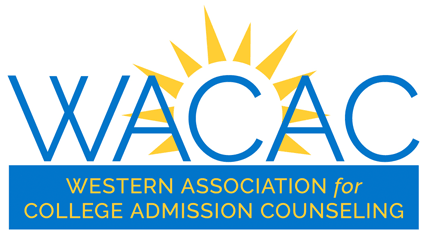The University of California (UC) recently released a report titled “Preparing California For Its Future: Enhancing Community College Student Transfer to UC,” which discusses imbalances in UC transfer admissions and examines possible social, economic, academic, and institutional causes. They point out the fact that the vast majority of transfer students are admitted from a small handful of the state’s 112 community colleges. I commend the UC and President Janet Napolitano for creating a Transfer Action Team and publishing this study, which shows a degree of transparency that is much appreciated. As a Transfer Center Coordinator, I particularly like that the tone of the report is that of partnership. No one person, institution, or solution can address all of the challenges we face in California’s system of higher education.
Within days of the report’s publication,a statement was issued by the Campaign for College Opportunity in which Executive Director Michelle Siqueiros (citing UC data) stated, “When 50% of transfer students come from only 19 CCCs – concern and urgent action is appropriate.” I agree that such a huge disparity is worthy of analysis and action. Yet despite a variety of contributing factors that are examined in the UC’s report, the Campaign chose to focus on one strategy, advocating “The UC can be groundbreaking in its approach to streamlining transfer by adopting the Associate Degree for Transfer (ADT) and Transfer Model Curricula already created, modifying it in a clear and simple way to reflect UC’s more rigorous admission requirements.”
Let’s be clear about a few things. For many of us in the transfer trenches, there is very little that is “clear and simple” about the Associate Degree for Transfer. Second, I wouldn’t call this a “groundbreaking” proposal for the UC system, which already has a Transfer Admission Guarantee (TAG) program and a good track record of graduating transfer students successfully and in a timely manner. And finally, it’s much too soon to conclude that ADTs can or will do anything to correct imbalances in the distribution of transfer admissions to either the UC or the Cal State systems.
The UC system has nine undergrad campuses in a state that’s 770 miles long and 250 miles wide (Of course I was walking around with those figures in my head… I mean, uh, thanks Wikipedia!). So if a student at the College of the Redwoods wants to study Anthropology, for example, is she more likely to go 17 miles up the road to Humboldt State or relocate almost 300 miles away to attend the nearest UC campus (Davis), even if she can complete an ADT that works for either? The ADT will never completely trump geography, and it’s much too soon to determine if it will do anything to influence students’ behavior in this respect.
From a transfer planning perspective, the ADT’s Transfer Model Curricula (TMC) can make things simpler for some students, but certainly not all of them, and implementing these degrees for Cal State University (CSU) transfer has required countless thousands of hours of work. I suspect that creating UC equivalents would be at least as complicated, particularly since some of the most challenging curricula to develop as ADTs have been in the STEM disciplines which are at the core of the UC mission. To date, there are no ADT’s for students majoring in biology, biochemistry, chemistry, environmental science, or any of the engineering disciplines, all of which are popular among UC transfers. And the ADT was designed for graduation within 120 semester units. However, many of these STEM disciplines, along with fine arts and a few other popular UC (and CSU) programs are high-unit majors that require the equivalent of 130 semester units or more. It would be a tremendous oversimplification to think that the UC could easily and quickly adopt existing ADT curricula.
Other factors identified by the UC report as contributing to the admissions inequity include greater availability of major prep courses and access to effective advising at the community colleges. Improvements in these areas could certainly have a transformative effect on all transfer admissions across the state, and the UC can support such efforts, but ultimately those are matters of community college funding and resource allocation. It would require more faculty and staff, particularly in the STEM disciplines, plus investing in more science and computer labs and related technical support.
So let’s assume that all of these factors come together perfectly and the UC sees an increased number of qualified transfer candidates from across the state. Will the goal of greater geographic diversity be served if UC admissions then become even more selective? How would the UC manage the influx of highly-qualified upper division students? And while state funding in higher education is recovering from the savage cuts of the past few years, the long-term trend is still one of disinvestment. We need to reverse that trend and invest substantially in all segments of education just to meet the current needs, let alone an increased demand.
The Campaign’s statement concludes “…our students cannot wait for the adults in the room to fix the system over the course of more than four years.” With regards to the ADT, I couldn’t disagree more. In time, we may find that these degrees become an effective tool for CSU transfer, but only two years in to their limited implementation we have yet to see a large number of students transfer with them, and almost none have completed their bachelor’s degrees via the ADT pathway. It is much too soon to claim success with the ADTs, and therefore too soon to graft them on to the UC system, particularly when the UC’s own Transfer Action Team has identified multiple other options which may be implemented more efficiently. So why rush to implement an unproven, incomplete, complicated, and expensive system that is not designed to address most of the key barriers to balanced transfer access that the UC has identified?
By Robert Waldren
